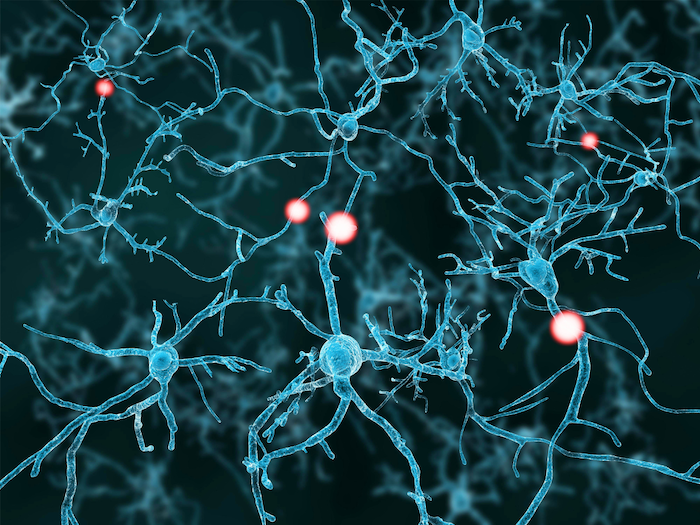Where Evolution Meets Innovation: Unveiling the Cyborg Cockroach
Osaka, Japan – In the ever-evolving landscape of robotics and artificial intelligence, researchers are exploring unprecedented frontiers with a focus on cyborg insects. A collaborative research team from Osaka University, in conjunction with Diponegoro University in Indonesia, is pioneering a groundbreaking project that aims to harness the natural abilities of insects combined with artificial intelligence […]


Osaka, Japan – In the ever-evolving landscape of robotics and artificial intelligence, researchers are exploring unprecedented frontiers with a focus on cyborg insects. A collaborative research team from Osaka University, in conjunction with Diponegoro University in Indonesia, is pioneering a groundbreaking project that aims to harness the natural abilities of insects combined with artificial intelligence to create advanced cyborg systems. The objective is to enable these hybrid creatures to navigate complex and often unpredictable environments that remain difficult for traditional robots and even humans to access.
This innovative approach leans heavily on the intrinsic characteristics of insects, particularly their mobility and adaptability. Unlike conventional robots, which often require substantial power and mechanical sophistication to navigate obstacles, cyborg insects can utilize their natural instinctive behaviors to move through intricate settings. The researchers embarked on this venture to see if these modified insects could thrive in challenging environments filled with various barriers and obstacles. The integration of electronic devices designed to enhance the insects’ inherent skills represents a significant leap in biohybrid technology.
Central to the research was the attachment of motion and obstacle detection sensors to the bodies of roaches, allowing them to respond intelligently to their surroundings without human intervention. This unique setup means that cyborg insects can still rely on their natural navigation techniques while also benefitting from electronic guidance when necessary. By not overwhelming these creatures with excessive mechanical equipment, researchers can observe and promise cyborg insects that maintain their autonomy, allowing them to fall back on their instincts.
In the experiment, the team created a variety of obstacle courses designed to simulate the types of environments that cyborg insects might encounter in real-world applications, such as search-and-rescue operations in disaster zones. These courses were deliberately structured with sandy ground, stones, and wooden barriers to challenge the insects. Not only were the cyborgs able to traverse these terrains successfully, but they also demonstrated an extraordinary ability to adapt and navigate through unfamiliar contexts seamlessly, showcasing the potential of this technology.
Keisuke Morishima, the study’s senior author, emphasized that this technology holds immense promise for various applications in the real world, especially when scaled beyond laboratory settings. The implications for search-and-rescue operations are particularly profound. With their ability to maneuver through tight spaces and rough terrains, cyborg insects possess the potential to inspect hazardous areas that would typically be too dangerous for human rescuers. This includes post-disaster environments where stability is compromised and validity of information is paramount.
Additionally, the cyborg insects exhibit a remarkable ability to operate in low-oxygen conditions, making them prime candidates for roles in deep-sea exploration or even missions that venture into the realm of outer space. Their efficiency in energy consumption adds another layer of advantage, allowing for prolonged operational durations without the need for frequent recharging or significant energy input.
The researchers’ ambitions go beyond practical rescue measures; they perceive a potential application where cyborg insects could explore cultural heritage sites that are fragile and sensitive, subsequently providing researchers with insights previously unattainable. Understanding historical monuments and archaeological sites through the lens of these biohybrid systems could revolutionize conservation efforts and allow for enhanced preservation methodologies. Researchers anticipate that unique collaborations between science and culture may flourish from this innovative intersection.
While these developments reveal the astounding potential of cyborg insects, the researchers also understand the importance of ethics surrounding their use. Establishing clear guiding principles on how and where these cyborgs are deployed is essential as the technology evolves. The line between straightforward utility and exploitation must be respected as society navigates the implications of integrating living organisms with advanced technology.
In conclusion, the ongoing research at Osaka University and beyond into cyborg insects not only highlights impressive technical achievements but also prompts a critical dialogue about the future intersections of biology and technology. Researchers believe that as they refine the ability to modulate insect behavior in real time, even more sophisticated applications intended to tackle complex problems facing our world will emerge. This nexus of biological and artificial intelligence innovation makes for an exciting avenue for researchers and technologists alike, as the integration of such systems might very well reshape the domains of robotics and biological sciences.
The article, titled “Biohybrid Behavior-based Navigation with Obstacle Avoidance for Cyborg Insect in Complex Environment,” is published in the journal Soft Robotics, marking a significant contribution to the field. As the research initiative progresses, additional findings will likely shed more light on the practical implications of this fascinating blend of biology, engineering, and artificial intelligence.
Subject of Research: Animals
Article Title: Biohybrid Behavior-based Navigation with Obstacle Avoidance for Cyborg Insect in Complex Environment
News Publication Date: 11-Feb-2025
Web References: http://dx.doi.org/10.1089/soro.2024.0082
References: N/A
Image Credits: Mochammad Ariyanto
Keywords
Bioinspired robotics, Robotics, Robotic imitation, Robotic designs, Robotic sensors, Cybernetics, Disaster management.
Tags: artificial intelligence in roboticsbiohybrid technology advancementscyborg cockroach innovationcyborg insects researchelectronic sensors in biohybridsenvironmental navigation challengeshybrid systems for complex environmentsinsect mobility and adaptabilityinterdisciplinary research in roboticsnatural instincts in robotic systemsOsaka University robotics projectrobotics and AI collaboration
What's Your Reaction?

































